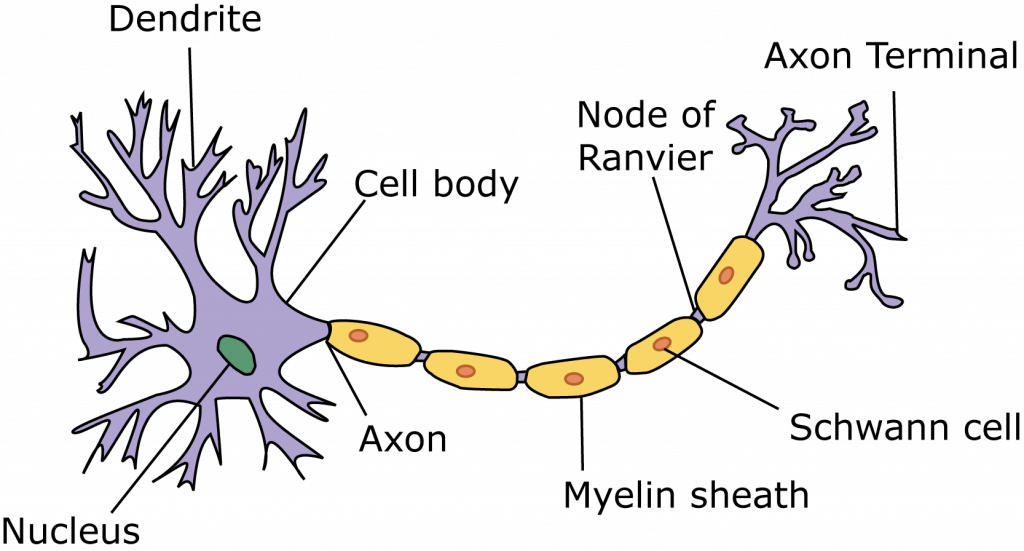1.1 Cells of the Nervous System
Section Learning Objectives
The nervous system is comprised of individual cells called neurons and glia. Neurons are the basic unit of communication in the nervous system. Neural messages are sent between neurons using electrochemical signals. Most neurons have three features: dendrites, a cell body (soma), and an axon. Figure 1.1 shows a schematic view of a typical motor neuron. The dendrites receive input from other neurons. The dendrites are extensions of the cell body. The input signals from the dendrites are integrated in the cell body. The cell body also houses the organelles, such as the nucleus, that are important for maintaining the neuron. The axon carries the neural signals from the cell body to the terminal buttons. Axons vary greatly in size, from less than a millimeter to as long as a meter – think of the distance from the distance from the base of your spine to your big toe. Most axons are surrounded by the myelin sheath. This insulates the axon and speeds processing by acting as an insulator. The axons of many neurons bundled together are referred to as nerves. Neurons can be classified into types based on their functions. Sensory neurons work to carry messages to the central nervous system from our sensory receptors in our skin, eyes, nose, ears, and other receptor organs. Motor neurons transmit messages from the central nervous system to muscles or glands. Interneurons, also called association neurons, make all other connections within the nervous system.
The place where neurons make connections to other neurons is called the synapse. In humans, neurons don’t connect by touching, there is a space between them. You will read much more about the synapse in later sections as this is where the physical point of brain changes that occur with learning.

Neurons are supported by glial cells. There are many more glial cells (90% of the brain’s cells) present in the brain than actual neurons. There are several types of glial cells. Some glia support the neurons in place. The myelin sheath is comprised of glia cells that grow to wrap around the axon. Others carry away or digest debris. Yet others assist in providing nutrients to the brain.
cells that form the basic unit of communication in the nervous system
supporting cells of the nervous system
